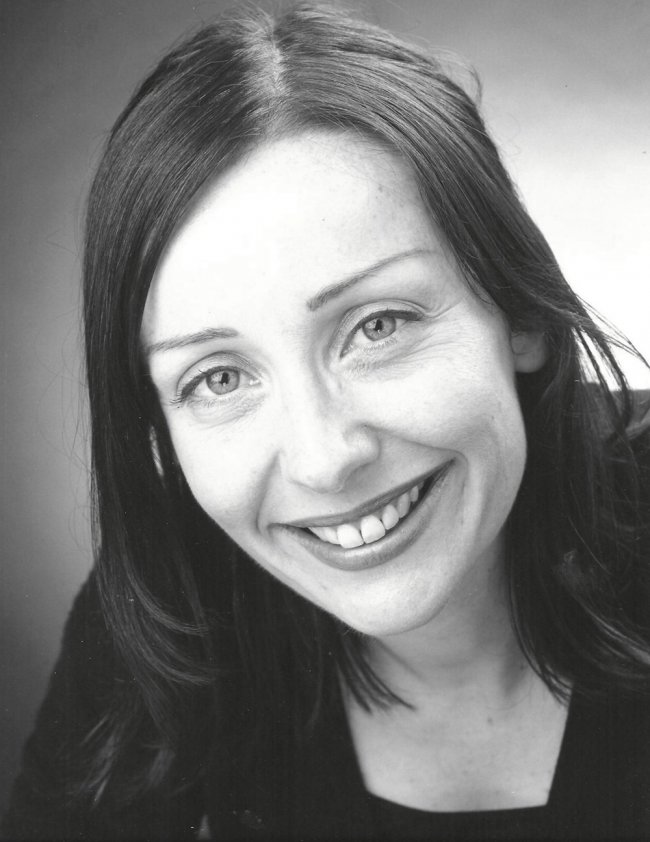Guest Editor Mark O’Brien talks to Muireann Ahern - outgoing Theatre Programmer and Producer at The Ark, who will soon take up full-time as Joint Artistic Director of Theatre Lovett.

Hi there can you speak a bit about your work background and your practice
Since graduating from The Samuel Beckett Centre almost 20 years ago – I have been working in the field of Theatre for Young Audiences. Over the years I have worked with some great companies (Wet Paint, TEAM, The Abbey Outreach, The Ark) in varying roles – as an actor, director, education officer, producer and programmer. I am about to move from my current position as Theatre Programmer and Producer at The Ark to Theatre Lovett where I will take up post as Joint Artistic Director alongside Louis Lovett.
Is there a common thread that runs through your work?
Children, children and more children. I have to say, however, that I do lean towards the dark side when it comes to making, programming and enjoying work for children. I don’t buy into the primary colours and pigtails approach (and frankly I don’t think the children do either!) I have programmed the family season of the Ulster Bank Dublin Theatre Festival for the last five years and have been very taken by the craft of some of the visiting companies. Their ability to take children skillfully to darker places and then bring them back again unscathed - and exhilirated. A lot of the work that grips me is tiptoeing round the fringes of terror. This can be delectable and thrilling for children when done responsibly and with skill. I recently directed a show for Theatre Lovett called A Man in Half written by Fances Kay. At it’s core is the belief that young people are able to enjoy and understand drama that shows the adult world as a complex and occasionally dark place. Throughout the piece is balanced by some great comedy.
Can you talk about the challenges in the area of work with / for children and young people?
I would have to say many of the challenges are most probably the same as making work for adults - finding like-minded collaborators, the constraints of time, budget etc. and more. One very big challenge I find is trying to bridge the artist divide that exists between those who make theatre for children and those who make theatre for adults. I find it very exciting when these lines are blurred. For example, while Ireland has some fine practitioners in Theatre for Young Audiences (TYA), over the last few years I have worked with many artists not normally associated with TYA. People like Marina Carr, Selina Cartmell, Lynne Parker, Don Wycherley and others. Inviting these artists to make work for young audiences can be a good thing when they are supported in the process. Often, they may not have thought of turning their craft to children’s theatre until invited to do so. Another challenge can be to find actors who are at ease interacting with their audience and with what the children might offer them during performance. This is a very particular skill, knowing when to engage and when not to, yet at all times with that lovely sense that every child’s offering is wholly or subtly embraced. Louis Lovett is the master of this interaction and has a real desire to upskill other actors in this area. He surfs his audience beautifully and his audiences are rarely left unheard or with their contribution left hanging in the air. When an actor can include what comes from the floor without putting the brakes on the momentum of the piece - this is what can really set theatre for children apart from the grown-up variety.
What inspires you?
Theatre that shakes me up, moves me or out-foxes me inspires me. Artists who are at the top of their game inspire me. Writers, directors, designers, composers, dancers and those actors who can transport us from out of our seat, up into the air and down again into their heads and inside their story. A child in an audience who is truly connecting inspires me to try to do this for them again and again. To make more work where they can be fully present, connected and engaged. Where they will leave the theatre remembering this one. And remembering it for the right reasons.
What is most important in work with and for young people? Is it the engagement or the aesthetic? Is there a space where they are intertwined? How do we get there?
Most important in work for young people is probably accuracy in terms of pitch. There is no point if this is misguided or misdirected as both audience and artists will be at sea. We need to be clear of the developmental levels of our audiences, their cognitive abilities, emotional needs etc. It is only then can we try for a meaningful engagement. With that in place, engagement can begin to happen on many different levels - the aesthetic, the character’s dilemma, the music, and so much more. When this happens we are doing our job. That’s the bullseye. Striving for a fuller engagement is what I enjoy. I love seeing children and adults enjoying theatre for whatever reason might grab them. But I always want to make it better for them.
How do we negotiate what the objectives are in working in a collaborative context?
Having a shared objective would be nice. But, as we know, things can and do change. Goalposts shift. As much as possible we should agree to go forward with a willingness to support and celebrate the process or outcome. Success or failure. Coming or going. With an honesty and an openness and with a good energy. Knowing our collaborators is key. Having trust and being flexible is also critical to successful collaborations. Most importantly in any collaboration is learning how to embrace failure more. We have to be ready and open to throw out all our ‘bad’ ideas onto the floor for discussion. I find this hard. I like mine to be all polished and shiny before they get an airing. I am learning!.
In response to my opening thoughts an artist posted that. ‘We should always aspire to Excellence, Learning, Engagement, Participation in our practice- both for the facilitator and the young people’ In your experience what are the conditions needed to make this happen and why?
That’s a mighty big question there. From my standpoint, the answer to WHAT is WHO. WHY? Because of WHAT they can do. Last year, I was a guest speaker at Danish Plus, an international TYA conference on the issue of Quality. It was a fascinating few days and provoked a whole range of responses from people. Integrity was a word that came up more than once. But coupled with this came the key word for many – Talent. Our task, if we seek to be purveyors of life enhancing theatre and opportunities for children should be to unearth and encourage the “who” – those artists and facilitators who truly shine at what they do.
One outstanding memory or project and why?
The Girl who Forgot to Sing Badly. (The Ark in association with Theatre Lovett) This was an outstanding process as all artists involved were not afraid to go beyond the parameters of what their role in the project was and to just let the air in. It was a truly collaborative project with very powerful creative returns. No one was precious about their corner – but everyone was following some kind of map that we all understood. Finegan Kruckemeyer, Lynne Parker and Louis Lovett know how to play and how to get others playing. Even the audiences at this show feel they are playing too. Young and old.
Dream Project?
I have Panto fantasies. Of the good kind. Oh yes I do.


No comments added